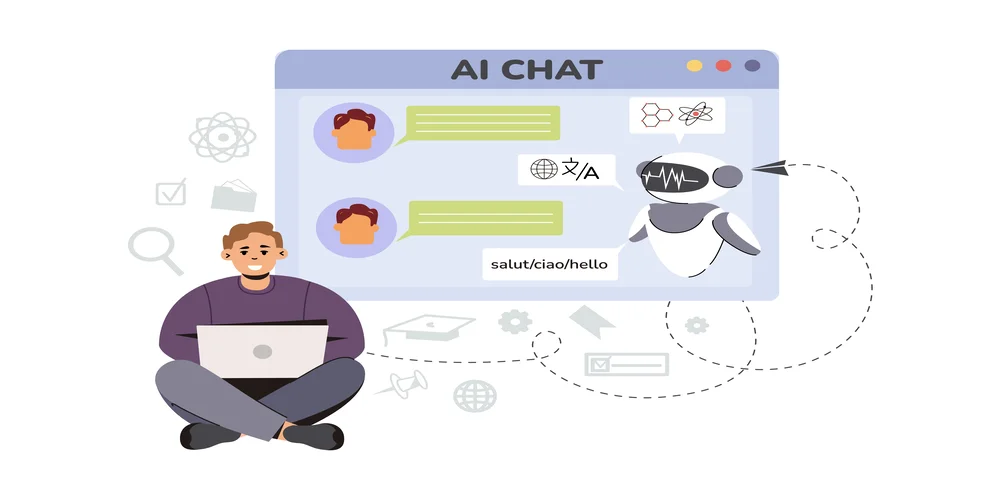How to Write an Article: A Step-by-Step Guide for Beginners

Do you know that around 7.5 million blog posts get published every day? Meanwhile, the reader’s attention span is just 8 seconds. This makes writing engaging articles more important than ever, as it helps capture and keep readers’ interest.
Learning how to write an article is not only about creating great content; it also includes formatting and optimization that help you rank higher. It also helps build the authority of your website and attract organic traffic.
This guide will walk you through how to write an article in just seven steps. It’s so easy, you could follow them with your eyes closed. Let's get into it!
What is Article Writing?
Article writing is the process of creating a structured piece of writing focused on a specific topic, intended to be published in newspapers, magazines, and online platforms. An article always has some purpose, whether it is to inform, educate, or persuade. Before you start writing, be clear about your goal so that you can present readers with clear and relevant information.
They are written to share knowledge, provide practical solutions, or influence opinions. Articles assist the reader in learning more about the topics so that they can make a decision or stay updated on current trends.
Articles are not like essays as they are formal and argumentative. Articles are usually concise and are intended to appeal to more people. Unlike blogs, articles have a more objective tone. And in contrast to reports, they do not
involve much raw data and are engrossing in explanation.
What are the Elements Included in the Structure of an Article?
Article follows a very specific structure. The structure of a well-written article should maintain a clear flow. It should also be readable, and each part serves its purpose effectively. Below are the elements that are required in an article:
- Headline
- Introduction
- Body
- Conclusion
- Call to Action (CTA)
A clear structure improves readability and helps with SEO by signaling relevance to search engines.
Types of Article Writing
Knowing the type of article you're writing helps you set the tone, structure, and format. Here, we discuss the most common types of articles writers typically work on: formatting and structure. Let’s have a look:
1. News Articles
These focus on delivering factual, timely information. They're written objectively and follow the inverted pyramid structure of an article, with the most important info first.
2. How-To Articles
These articles are step-by-step guides that instruct the reader on a specific action. These articles are built on steps to help readers achieve a goal. They're practical and action-oriented.
3. Opinion Pieces
They are written to demonstrate the opinion of the author on a topic. They are convincing, and in most cases, they contain robust arguments and facts.
4. Listicles
These articles are structured as lists. For example, "10 Tips for…". They're easy to skim and great for engagement. They are written to present complex ideas into digestible chunks, making it easy for readers to understand the concept.
5. Reviews
Cover in-depth evaluations of products, services, or experiences. They include pros, cons, and recommendations. These articles help readers to make better decisions before buying anything.
6. Feature Articles
More narrative and creative, these explore a topic in depth, often with interviews or storytelling. These articles aim to inform, entertain, or raise awareness by giving in-depth details.
How Should an Article Be Written? Step-by-Step Guide
Step 1: Find a Relevant Topic
The very first step is to understand what your audience is searching for. Learning about your target audience is essential, such as what they want, what problems they face, and much more. For that, you can use keyword research tools such as Semrush or Ubersuggest.
To start off, you can look for long-tail keywords. They are more specific and often easier to rank for. Also, be clear about the user's search intent, such as informational, transactional, etc. For example, if they want to learn something new, you'll create an informational article, and if they buy a product or service, then you'll go for a transactional one.
Select topics that will go together with the needs of your audience and your expertise. Start by targeting what topic your audience is searching for. Create a list of common questions your targeted audience is asking and facing challenges. Then, match those to your expertise. Tools like AnswerThePublic, Google Trends, and Semrush Keyword Magic Tool can make this task easier for you.
Step 2: Create an Outline
An outline helps the article remain focused and has a smooth flow. Without a proper outline, there’s the risk that you skip important points and repeat ideas.
Begin by identifying key subtopics from the Google SERP. Look at Google’s suggestion “People Also Ask” questions and top-ranking H2s. Then, arrange your points in a logical order (e.g., problem → solution → tips).
This makes your writing easier to follow. You can also use blog post templates, like how-to, listicle, or case study. It can save time and maintain consistency.
Step 3: Craft a Powerful Headline
Your article's headline is your first impression; it is the main hook that engages your audience and drives them to read further, and tells them what to expect in the article. Here’s how you should create a headline that is eye-grabbing for users and optimized for search engines.
- Include the target keyword
- Add numbers (e.g., “7 Proven Ways to...”)
- Use power words (e.g., “ultimate,” “essential”)
- Add a promise
- Word limit is ideally under 60 characters
- Avoid clickbait; instead, make the value obvious
It is recommended to keep it clear and concise. Here’s an example: “How to Start Freelancing With No Experience [2025 Guide].” This headline is both helpful and keyword-optimized. Emotional triggers such as curiosity, urgency, and surprise are other tricks that improve click-through rates (CTR).
Step 4: Write a Compelling Introduction
A strong intro grabs attention fast. Use the BLUF (Bottom Line Up Front) technique. This includes starting with the main point, a statistic, or an outcome and then stating what is going to follow.
This sets expectations and keeps readers interested. For example: “Did you know that the number of freelancers in the U.S. is predicted to reach 86.5 million by 2027? This makes it essential to remain strategic to not to lose your clients. In this guide, you’ll learn 7 simple steps to start an effective freelance career from scratch.”
This example demonstrates how to add a personal hook or question to build a connection. It’s recommended to keep your intro short and avoid long-winded openings.
Step 5: Write the Draft
Now, expand your outline into a complete draft. Drafting helps improve the flow of your article, gives structure to your thoughts, and helps you connect one point to the next. Let’s have a look:
- Short paragraphs, bullet points, and headings = improve readability.
- Real-life examples of storytelling = help the message stick.
- Images, charts, or screenshots = break up text and improve engagement.
Tools like ChatGPT or Jasper can help brainstorm or rephrase. However, you should not rely solely on these tools. A human touch is necessary to maintain the originality of your content.
Step 6: Edit Your Content
After drafting, take a break, then come back to edit. You can use tools, such as Grammarly for grammar fixes and Hemingway Editor for sentence clarity. Read your article out loud, it is a technique that helps you catch awkward phrasing or repetition.
Ensure that every paragraph supports your main idea or topic. Make your content clear, specific, and avoid fluff. Additionally, verify your facts and ensure that your links are functional.
Step 7: Add a Call to Action (CTA)
Guide your reader to the important step. The powerful CTA might request them to comment, share, subscribe to your newsletter, or read a related article. You can also make them download a free resource like a checklist or template.
CTA are placed at the end of the articles or subtly anywhere in the text. Try to use action verbs as they bring energy to your writing. Every good article makes the reader go forward without ambiguity.
How to Format an Article:
Writing an article isn't only about creating content. Formatting is equally important as it ensures the content is legible, easy on the eyes, and can be skimmed through. It helps ensure no important information is missed. Let’s have a look at the article writing formatting.
Use Clear Headings: Create a hierarchy where each heading is given a tag depending on its chronological order in the article. It helps readers and advances SEO.
Break Up Text: Use short paragraphs with plenty of white space. This makes it easier for readers to scan and read.
Bullet Points & Visuals: Clearly convey your point with the aid of bullet points and include images with alt text to ensure accessibility.
Add Links & Citations: Support claims with proper sources. Also, include internal links naturally. This not only builds credibility but also helps improve your website’s SEO performance.
Optimize Metadata: Write a compelling meta title (50–60 characters). And the meta description should be around 155-160 characters with your main keyword.
Final Thoughts:
Article writers require frequent practice, and you can master article writing and unlock the power to create content that truly resonates.
However, taking expert help is a smart decision. So, if you're struggling to create content, especially articles that rank and turn readers into leads, it's time to take an expert's help.
They know all the ins and outs of article writing and how to transform raw ideas into compelling articles. Our experts craft powerful content that resonates, guiding your message from concept to completion with precision and purpose.
Ready to start? Explore more about our top writing services.
Tags:

Subscribe Now & Get Exclusive Industry Insights!
By clicking submit button, you agree to our privacy Policy

